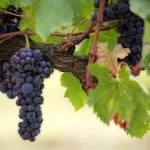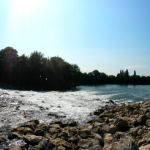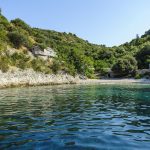Join us on a tour of Dalmatia’s most overlooked tourist destination – Kaštela.
Kaštela, a city nestled between Split, Solin, and Trogir, is a smorgasbord of interesting stories, historical locations, and legends, and yet, it is very often overlooked as a possible tourist destination and reduced to a place you drive through on your way to and from the airport. That is why, on May 4, 2016, we’re taking you on a tour through this city comprised of 7 historical settlements.
1. Challenge of the day – name all 7 settlements in order
Kaštela is the 9th largest city in Croatia with just under 40 000 inhabitants. Comprised of 7 settlements which were each built around their own castle (Kaštel – castellum, castle, hence the name), even residents of Split and Trogir have trouble naming all 7 of them in order, so it’s time to learn our Kaštela ABCs. Nearest to Split is Kaštel Sućurac, followed by Kaštel Gomilica, Kaštel Kambelovac, Kaštel Lukšić, Kaštel Stari, Kaštel Novi and finally the last one – Kaštel Štafilić. You get extra points if you can name them from the last one to the first.

2. City built around 16 castles
Even though the 7 castles on the seaside are the ones Kaštela is renowned for, the fact is, 16 castles were built altogether. Ones in the hinterland were built for protection from the Vlasi and the Ottoman army and the lavish seaside ones as residences for noble families from Split and Trogir. Settlements were planned around the castles for workers and farmers and the castles also doubled as storage facilities for annual yields. Now let’s go through all 7 castles that still attract the attention of visitors and locals alike.
3. Lodi family castle in Nehaj

This unfinished castle is located on one of the largest beaches in Kaštela – Gabine and it is surrounded by a small port. Construction commenced in the 16th century by Ludovik and Ivan Lodi, two noblemen from Trogir. Unfortunately, both brothers died shortly after construction started so it was never finished, but the castle was soon occupied by refugees from Senj that fled the Ottoman army and that is why the castle (fort) is now often called fort Nehaj (same as the fort in Senj).
4. Stafileo fort (Rotondo) in Kaštel Štafilić
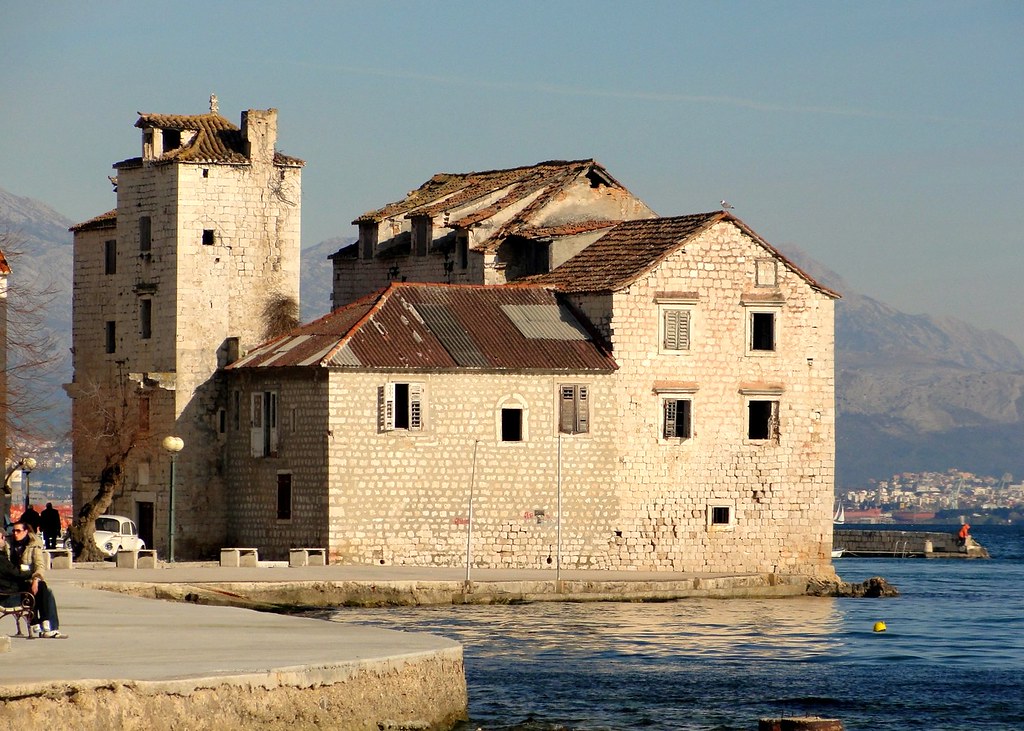
Construction of this fort began in the year 1500 and it is now called either Kaštel Stafileo or Rotondo, after the noble families that lived in it. The fort was completed in 1508 and immediately the construction of an entire settlement began to protect the inhabitants of an old village Bijači on the hill above Kaštela. According to the local legend, first owner and builder of the fort Stefano Stafileo arrived from Crete, married a woman from Trogir and became a well-respected resident of Trogir with houses and residences all over town. The whole connection with Greece is based on the fact that the family crest carved into the fort has grapes in it (stafile in Greek). Stefano’s son Ivan was a respected church official and the Pope’s diplomat who handled the divorce of Henry VIII and Catherine of Aragon. King of Poland gave Ivan a title and a priceless painting that is considered to be miraculous. The painting can be seen in the church in Kaštel Štafilić.
5. Cippico castle in Kaštel Novi

Even though it is currently making headlines because of the hotel project that just cannot catch a break (photo was taken before the new owner was asked to demolish the illegally built top floor), this fort was built in 1512 by Pavao Antun Cippico as a summer house for his family. He built a fortified settlement for the villagers and his workers and soon enough, the entire settlement of Kaštel Novi was built.
6. Koriolan’s castle in Kaštel Stari

Koriolan Cippico was a member of Trogir’s most prominent noble family and the uncle of above mentioned Pavao Antun Cippico. Lepant war veteran celebrated admiral, humanitarian and writer, Koriolan built his fort in 1476 on a cliff in the town harbor and connected it to the mainland with a drawbridge. In time, the area around the castle was filled and connected to the mainland, and a whole settlement was created around it. In honour of Kolriolan’s castle, the entire village was named Kaštel Stari (old castle).
7. Rosani castle / Rušinac in Kaštel Lukšić

Kaštel Lukšić has two magnificent castles. One of them was built by the Rosani family back in 1482 on a sea reef. Now famous as the home of Miljenko, Dobrila’s tragic lover (which we will of course cover later on in this article), this former summer house and the castle was abandoned, along with all the surrounding houses in the 17th century because it lacked fortification. Today, it is a residence and you are welcomed to walk around its landscaped gardens.
8. Vitturi castle Kaštel Lukšić

Built by the second family featured in the tragic love story of Miljenko and Dobrila, Vitturi was constructed by Nikola and Jerolim Vitturi, noblemen from Trogir in 1564. It consisted of a residential two-story building with balcony and typical sea exit on the south side and of two defensive towers and a drawbridge as a connection with the mainland on the northern side. The drawbridge was replaced with a one-arc stone bridge in the 18th century. In the center of the castle is a yard with arcades and galleries on the 1st and 2nd floor. Today it houses the public library and the Kaštela Tourist Board office.
9. Cambi castle, Kaštel Kambelovac

After they received the official approval in 1478, noblemen and landowners from Split, brothers Jerolim and Nikola Cambi completed their fort in 1517. The fort was built on an islet to protect themselves and the residents of Lažan and Kruševik settlements. It is the only cylindrical castle in Kaštela and a typical defense fort.
10. Kaštilac fort Kaštel Gomilica

This fort was actually built as a defense fort by Benedictine nuns in 1545 to protect the inhabitants of Upper and Lower Kozica from the Turkish threat, Benedictine nuns completed the construction of a fortified settlement Kaštilac on the islet of Gomilica in 1545. Entrance to the castle is protected by high tower over the stone bridge with arches. Kaštilac is 40 m away from the shore, connected with the stone bridge. Perfect for the set of Game of throne you say? Well, you’re absolutely right, since in season 5 this very castle was used as one of the locations (City of Braavos) and it is now included in the Game of Thrones tour.
11. Glavica fort in Kaštel Sućurac

This is the oldest defense fort in Kaštela. It was built in 1392 by the Split archbishop A. Gvaldo to protect the inhabitants of the ancient settlement Putalj which was located on the slopes of Kozjak, near the little church of St. Juraj. Additions to the original fort were built by B. Averoldo 1488 and B. Zane (not Billy Zane the actor) in 1510.
12. The name Croatia was officially mentioned for the very first time in Kaštela

If you ever wondered where the name Croatia was used (officially) for the very first time, you don’t have to look any further than Kaštela, or the locality of Bijaći / Putalj to be more exact. Charter of Duke Trpimir (Croatian: Povelja kneza Trpimira), also known as Trpimir’ s deed of donation (Croatian: Trpimirova darovnica) is the oldest preserved document of the Croatian law. Dating back to 4 March 852, unfortunately, it is not preserved in its original form but in five subsequent transcripts out of which the oldest is from the year 1568. The charter clearly shows just how important Trpimir was (or thought he was) since he refers to himself as “the ruler of all Croats by the grace of God”. Charter is important not because of the mention of Croatia but because it proves the existence of Croats before Trpimir. It is a deed of donation given to the Archdiocese of Split by Trpimir’s predecessor Mislav. Mislav was a very generous ruler giving the Archdiocese of Split the Church of St. George in Putalj and almost half of the estates with associated serfs in the lower parts of Kaštela ( the whole of Sućurac along with its endless vineyards). We should mention that Trpimir was a very wise ruler and he knew that, by giving the church the very best vineyards in the country, he would get into Pope’s good grace.
13. The town that lived for the land and from the land

Even though Kaštela were largely devastated in the 20th century by the insane idea of the communist leaders to get the people away from the land and into the factories, Kaštela were always a renowned agricultural area. The land in Kaštela was so fruitful and valuable Trogir and Split were constantly fighting over it, and only the most prominent noble families were able to purchase estate and land in Kaštela, not sparing any money to build lavish forts to protect not only the people but also the annual yields from attackers. According to the local legend, when Trpimir gave away the vineyards to the Archdiocese of Split in his Charter, the people living around today’s Kaštel Sućurac found a loophole in the Charter since Trpimir stated that the Archdiocese will own the lands as long as he lives and the 14th century transcript was changed to say that the land will be given to them forever. So they hired one of the best attorneys in Split and headed off to Venice to dispute the Charter and to reclaim their land. The legend also says that the church officials destroyed the original in order to keep the estates and that is why we only have the 1568 transcript so the land was never returned to the hard working wine makers of Kaštela. Some disputes over land are still ongoing and there’s a joke saying generations of lawyers throughout history were able to live comfortably just by handling land disputes in Kaštela.
14. One of the longest boardwalks in Croatia

Since all of the 7 settlements developed around the sea and were gradually connected to each other by a wide boardwalk, the city of Kaštela now has one of the longest Rivas in Croatia, approximately 8 kilometres. Whether you would like to take a leisurely stroll by the sea or get on a bike and pedal your way through the 7 towns, you can start from Nehaj (Kaštel Štafilić) and end your route in Marina Kaštela (with one slight very short detour around Baletna škola). In my opinion, mornings are the very best time for a stroll because you can enjoy the true Mediterranean lifestyle you can only find in small coastal towns. The green market opens in Kaštel Stari along with the nearby fish market and the aroma of freshly baked bread is everywhere you turn.
15. Homeland of Zinfandel
For years, Zinfandel was considered the real American wine, but actually, every drop of this fine nectar has a bit of Kaštela history in it since DNA fingerprinting in 2001 established that Crljenak Kaštelanski and the American Zinfandel have an identical genetic profile, meaning they are the same variety. This was proved by Prof. Carole Meredith from UC Davis in California with the help of American winemaker of Croatian origin Miljenko Grgić and associates from the Faculty of Agriculture of the Zagreb University Ivan Pejić and Edi Maletić. Having sampled 150 varieties from Central Dalmatia, the sample taken in the vineyard of Ivica Radunić from Kaštel Novi showed an identical genetic profile of Crljenak Kaštelanski and Zinfandel, which finally solved the mystery of the origin of this most popular variety in the United States. Because this particular sort is very prone to various diseases, it was almost extinct in Kaštela, but true aficionados like Ivica Radunić kept the tradition alive. If you think Crljenak Kaštelanski is a tongue twister, let me assure you that other Croatian names for this grape are just as challenging to pronounce: Pribidrag or Tribidrag. Rest assured, whatever the name, the wine is equally fantastic. Winemakers from Kaštela are reviving their vineyards and investing a lot of time, care and money planting new generations of Crljenak and producing some excellent wines. Most notable wine makers that have now started exporting their wines abroad are Vuina, Tonči Kovač with his fantastic Putalj (Zinfandel / Crljenak) and Bedalov or Ivan Milin with his amazing Pošip (white wine). Innovative and above all educational wine tours are now available in Kaštela, for more info visit Bedalov Wines, winery Vuina or if you want a full-service olive oil and wine tasting plus a tour of some of the oldest vineyards in Kaštela topped with tales and legends from this area, go to Anton Tonči Kovač from Putalj winery, who selflessly helped me with his vast knowledge when I was planning this article.
Did you know that winegrowers of Kaštela helped save the French wine industry?
According to one of many legends, when France was hit by the phylloxera outbreak in the late 1860s (the great French wine blight), French winemakers came to Kaštela (among other places) to buy grapes to save their annual wine production. They would buy grape must and transport it by boats back to France where it would ferment on the way back home. For grapes that were grown just above Kaštel Sućurac, they would send their own pickers to harvest the grapes because it was considered to be of much higher quality than all other varieties and it was handled very carefully and of course it was much more expensive than other grapes grown in the area.
16. Miljenko and Dobrila, the original Romeo and Juliet
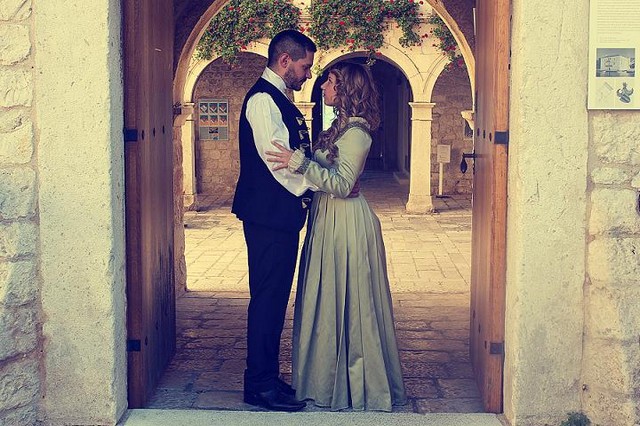
We don’t know whether William Shakespeare ever visited Kaštela or ever came across someone from this town and heard the story of young tragic lovers Miljenko and Dobrila and later on turned it into his masterpiece, but we do know they actually lived in Kaštel Lukšić in the 17th century. Miljenko was from the Rušinić noble family, the same one who built the above mentioned Rušinac castle, they were intellectuals, patrons of art, highly educated, while Dobrila was from the Vitturi family, the owners of the second castle in Kaštel Lukšić and though equally rich, they lived off their vast estates and agriculture. Two families were feuding over some land and feudal rights over peasants working in the village so when the news broke that their kids have fallen in love; it did not go down well. Young lovers kept seeing each other in secret, helped by Dobrila’s faithful servant Ankica. However, their fathers found out and Dobrila was put under her mother’s strict supervision while Miljenko was sent off to Venice to serve the Doge. To make sure she never sees Miljenko again, Dobrila’s father arranged for her to be married to an older noble from Trogir. Good servants managed to inform Miljenko on time and he returned from Venice on the very day of the wedding and managed to stop it just as they were exchanging their vows. This infuriated Dobrila’s father, conte Radoslav and he expressly sent her to St. Nikola’s convent in Trogir. Miljenko was still not ready to give up on his beloved Dobrila, he met their boat at the port in Trogir, wielding his sword in an attempt to stop it. As punishment for his erratic behavior, the magistrate exiled Miljenko to a Franciscan monastery on the islet of Visovac on the Krka River, not far from Šibenik. As luck would have it, he met Dobrila’s former nanny in the monastery and she managed to smuggle a message to Dobrila who was still in the Trogir convent. Dobrila tricked her mother superior and escaped but Miljenko didn’t make it to the meeting point in time. She wandered around Trogir and was captured by the Brigands. She accepted their offer to take her to Visovac to find Miljenko not knowing her father already ordered his assassination. Upon seeing him in the convent disguised as a monk, she thought he was ordained and lost hope the two of them would ever marry but they managed to escape. To avoid family shame, Dobrila’s father devised a plan how to end it all. He “offered” a hand of reconciliation to Miljenko’s family and they sent emissaries to Visovac to bring the young lovers home so they could legally wed. On a hot August night in 1680, a big wedding celebration was organized, and after a magnificent celebration Dobrila’s father, unable to cope with the fact that Miljenko won and that his daughter will now live in the castle built by his enemy, shot his new son in law in front of the Vitturi castle. Grief-stricken, Dobrila soon lost her mind, became gravely ill and died. Her dying wish was to be buried next to her beloved Miljenko in the tiny Chapel of St. John in Kaštel Lukšić opposite the castle. Their graves are still in the church and the gravestone still says “Pokoj ljubovnikom” (Peace to the lovers).

17. First school botanical garden in Croatia

In 1976, a school teacher Ivna Bućan started the very first school botanical garden project in Croatia (then Yugoslavia) in the area surrounding the newly built primary school. Her idea was to provide future generations with a natural classroom and to give them the opportunity to see, in person, plants from all continents. Now, 40 years later, it is still one of the most beautiful school botanical gardens in the country and the Ostrog primary school can proudly say they have over 1400 plants growing on 4 hectares. The southern garden has groups of autochthonous and exotic trees, bushes, and flowers such as camphor tree, eucalyptus, avocado, acacia, sequoia, cedar of Lebanon, cedar of the Himalayas, jasmine, bougainvillea. Botanical garden also includes an English and a French style garden. A few years back an olive grove with its 170 trees and 45 domestic and foreign species of olives was planted and it now represents the largest collection of olive varieties in Croatia. You can even purchase a bottle of olive oil made by the pupils from all olive varieties available on the grounds.
18. Biblical gardens with breathtaking views

If you’re looking for a perfect picnic spot, innovative event location or you’re simply after a relaxing afternoon surrounded by nature, you should definitely visit the Biblical gardens in Stomorija, above Kaštel Novi. Another project initiated by Kaštela’s own eco-warrior Ivna Bućan and cultural association Bijaći, Biblical garden was planted around the picturesque little church of Marija od Špiljana which dates back to 1189. The goal was to plant all plant species mentioned in the Bible and it now has 125 different species noted in scriptures, including a full rose garden, laurel, acacia, spices, aromatic herbs, apple trees, vines, olive trees, fig tree and Juda’s tree. On the very entrance, you will be greeted by an inscription “In memory of the second visit of the Holy Father John Paul II we founded this garden at Stomorija above the bay.” – People of Kaštela on 27 September 1998 and even the Pope’s olive tree was planted for the occasion. Many Croatian artists donated their own work to grace the garden including Vasko Lipovac who built his own take on Noah’s ark. And, since we are in the homeland of Zinfandel, a miniature vineyard was planted with all three genetically identical varieties Crljenak Kaštelanski, Zinfandel, and Primitivo. Oh, and did we mention the view from the gardens….
19. All hail the Bob
.jpg)
Bob, fava beans or broad beans have almost a cult follow in Kaštela. So much so that they have their own festival, Fešta o’ boba, every year in May in Kaštel Kambelovac. No matter how much you think you know about vegetables and how many recipes you can name, this event will definitely surprise you with some out of the box culinary combinations. Various associations from Kaštela and their guests from Poland prepare fava beans in savoury and sweet dishes so you can try fava bean pies, goulash, fava beans with seafood and even fava bean ice cream. One of Kaštela’s signature dishes is cuttle fish with fava beans and don’t let the colour or even the sound of this combination fool you, it’s actually delicious! Total Croatia News already reported on this unusual event, so follow the link if you want to find out more. Just leave the bottle of chianti at home all you Hanibal Lector fans.
20. Kaštela is one of the only cities in the world that owns its own island

Even though many of you have seen this tiny island every time you go shopping in Emezzetta, how many of you know that it was a sanctuary for many people during the Ottoman invasion? Owned by the city of Kaštela, the island now hosts several concerts a year, all organized by the Barbarinac association whose enthusiasm and devotion to the preservation of this island is the only reason why it is not devastated by some eager entrepreneur. The entire island is under strict protection of the Ministry of Culture as an archaeological site. Oldest architectural findings on this tiny island date back to the 1st century B.C. Since the island is located right in front of the former Salona port, archaeologists believe a lighthouse was built there in Roman times. Many other significant remains were found on the island, from the foundations of St. Martin’s church to foundations of several houses including the Cuparich castle, but today it is completely deserted with no visible signs of any previous buildings, and can only be reached by boat or during one of the several annual events that take place on Barbarinac.
21. First and only illiterate Venetian colonel was from Kaštela

In the period of Early Modern Age, in particular during Venetian-Ottoman wars, many families originating from Split, Kaštela and Trogir had for generations been involved in various Venetian military units. Merits acquired by several decades or even one century of serving under Venetian flag made it possible for many families and individuals to achieve advancement in their careers as officers, as well as to gain prestigious titles (conte veneto) and medals (entering the order of cavaliers of St. Mark). One of the most notable ones was Ivan Antun Kumbat, who, after an incident in his hometown, became a rower on one of many Venetian galleys. He advanced quickly after his acts of bravery in battles of Kalamota and Argos. When he, once again, showed incredible bravery during the siege of Corfu, Venetian officials decided to promote him to the rank of a colonel, but since he was illiterate, the Senate tried to dispute this decision. He stood up in front of the entire senate, tore his shirt open showing his countless scars and said: “ The sword is my quill pen, blood is my ink and my chest is my map”. Of course, his promotion was accepted, and even though he never returned to Kaštela and died in Corfu, in his last will and testament he left 200 gold ducats as dowry for 6 poor young girls from Kaštela that were preparing to join a convent.
22. The city of Kaštela owes its tourism to a Czech doctor Soulavy

In the past, tourism was not considered a lucrative business and it took a foreigner to tell us how we can actually start earning a living from tourism. Back in 1908, Czech doctor Henrik Soulavy bought an old stone Tartaglia mansion built in 1590 and even though at first he intended to use it as a summer home, just one year later he decided to turn it into a bed and breakfast. This is the year we mark as the beginning of organized tourism in Kaštela. Dr. Šoulavy recommended Kaštela to his patients with respiratory problems but pretty soon, guests started arriving from all corners of the globe. His old guestbook is still intact and according to the book, his most frequent guest was Mr. D.C. Augustus from Oak Park Illinois. I guess he wasn’t complaining about the lack of flights like we do today. Dr. Soulavy offered a lot more than just bed a breakfast and our tourist workers today could take a leaf from his book. He offered boat rides around the Kaštela bay, he cleaned the entire beach in front of the mansion with sunbathing areas, cabins, sunbeds, and parasols in times when locals almost never went swimming, he organized swimming and rowing lessons took them mountain climbing on Kozjak and served only local delicacies and wine. Dr. Soulavy is also responsible for founding the Music society Biranj, drama club and for organizing summer carnivals in Kaštela. His bed and breakfast was open all year round and in 19 years he had 50 000 guests. And when we look at the state of tourism in Kaštela today, all I can say is those were the days my friend.
23. Kozjak

Split has Marjan and Mosor, Makarska has Bikovo and Kaštela have the Kozjak mountain with its highest peak Veli vrj at an elevation of 779 m. Kozjak was full of old caravan routes and today it has over 80 km of well-marked mountaineering routes as well as an excellent pebble road (firemen’s road) that can be used as a great cycling path. Kozjak now has several fantastic gastro and wine tasting locations where you can refresh and recharge after a full day of climbing including the Bedalov estate, while on every June 26, the inhabitants of Kaštel Lukšić go to the peak of St. John’s to celebrate the day of their patron saint. This event is traditional and every family that originates from Kaštel Lukšić built their own table using whatever materials they could carry up the steep hill. Younger family members go up the hill the day before St. John’s and sleep in tents, attend morning mass and join their parents later in the day for the main festivities while parents mark the upcoming day of their patron by lighting bonfires. As all traditional Dalmatian festivities would have it, on June 24 the lamb population decreases dramatically since they are all roasting on a spit on Kozjak. Even if you’re not a big fan of lamb, get someone from Kaštel Lukšić to invite you to the festivities, it’s well worth the climb.
Croatia’s best mountaineering house is located in Kaštela
It is rare for a mountain of the same size as Kozjak to have more than 2 mountaineering houses and Kozjak has four. Furthermore, one of them, Putalj in Kaštel Suurac, was voted the best mountaineering house in Croatia by the Croatian Mountaineering Association . This three level house has a main dining room with 96 seats, a large kitchen and rooms with 76 beds in total. It offers magnificent views of Split, Kaštela, Šolta, delicious home cooked food and it is well managed by the Croatian mountaineering society Kozjak.
24. Mujo’s or Jure’s Cave, oldest traces of Neanderthals in Dalmatia
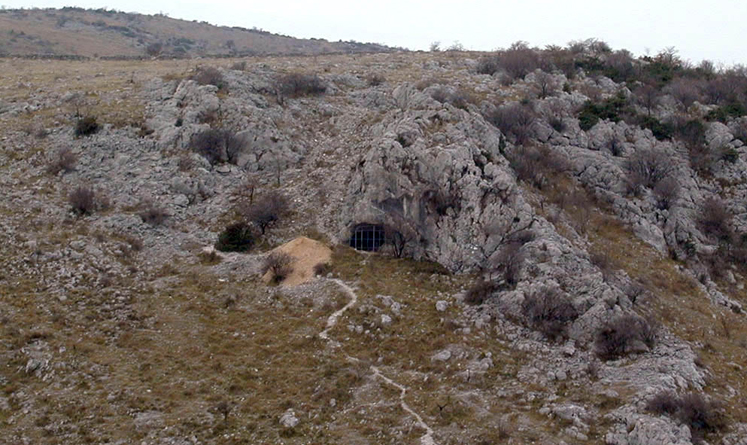
Mujo’s Cave (or Jure’s cave depending on whom you ask) holds the oldest traces of the presence of man and his activity in Dalmatia. This site is positioned northwestern from Kaštela, just off the road that leads to Labin. The cave was systematically researched from 1995 to 2003 by the Kaštela Town Museum and the Archeology Department at the Faculty of Philosophy of the University of Zagreb. Handicrafts that belong to Mousterian culture (200 000 – 30 000 years ago) were found here. Communities of Dalmatian Early Men, which were probably Neanderthals, occupied Mujo’s Cave from 45 000 and 39 000 years ago. That is approximately 90 000 years after the existence of Krapina Early Man and maybe it was the same time as the confirmed existence of one group of Neanderthals from Vindija. The Early Man from Mujo’s Cave fed on prairie bison, prehistoric cattle, bucks, chamois, and ibexes. All this testifies to the high level of intelligence, adaptable agility and developed social relations in the middle Paleolithic, what largely contrasted to a stereotype of Early Man as a dumb villain and a primitive man.
25. Bijaći and Roman Sikuli
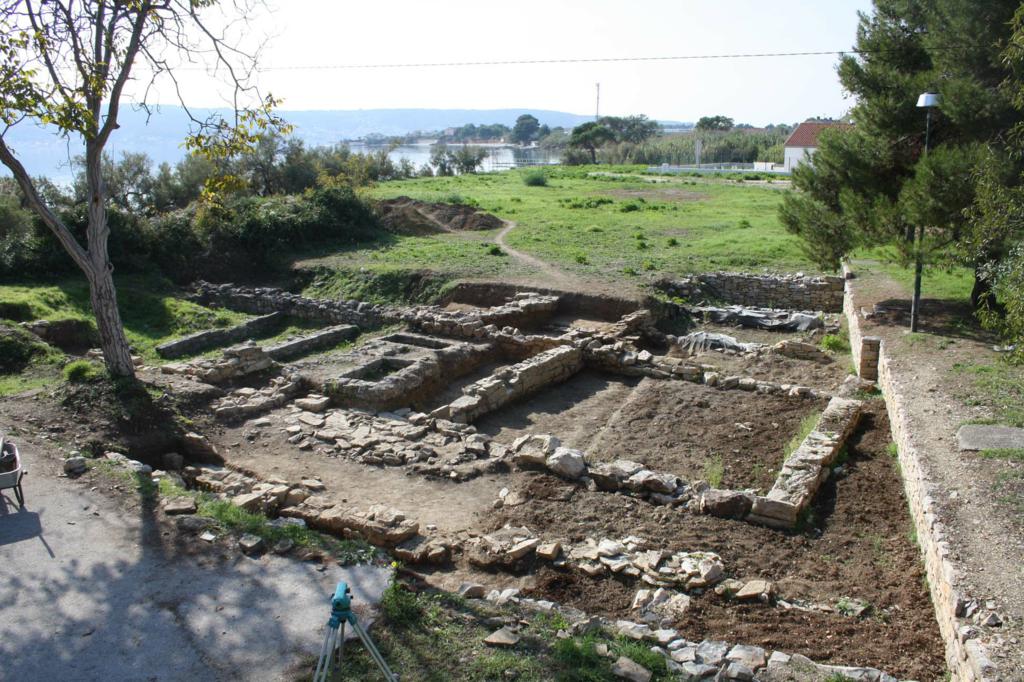
Two of the most significant archaeological sites in Kaštela. Siculi, an ancient site positioned in Resnik is the largest site of its kind discovered to date.Many years of archaeological research have found that it was a settlement with remains dating back to Hellenistic and late Romanic period. According to ancient itineraries, such as the Tabula Peutingeriana, here we can accommodate the only ancient settlement whose name was preserved in the area of Kaštela – Siculi. It was 5 Roman miles from Tragurion and 9 from Salona. Also, according to historical references made by Pliny the Elder, Emperor Claudius used to send his war veterans to Sikuli 1st century AD. A few tombstones were found in the area of neighboring Bijaći and they all mention the veterans of the XI legion. As this legion, with some others, remained faithful to Claudius during the Scribonian rebellion, it was named Claudia Pia Fidelis and they were handsomely paid for their loyalty with lands around Siculi.
Bijaći
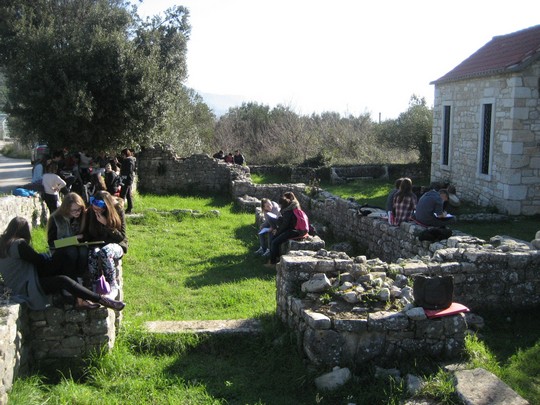
The settlement covers the area of approximately 36 000 sq m at the confluence of rich in water Resnik stream. It is positioned in a place where the road Salona-Tragurium separates and leads further to the inland, following the maple road toward the rustic villas in the field and further to Veli Bijać, Plano, and Labin. In the Iron Ages in the area of Veli Bijać, there was a big settlement, and Resnik was its closest neighbor and the most convenient road to the sea. The docking area from 2nd-1st BC was researched, the representative relief decorated glasses and craters originate from there.
And we finish this tour with an honourable mention.
1500-year old olive tree in Kaštel Štafilić

This natural monument is located in front of a kindergarten. Old olive, Olea Europea or Mastrinka as the locals call it still produces fruit and locals still make limited edition olive oil from it. This tree was already in full bloom when the first Croats arrived in the area, it is believed it was brought either from Greece or Souther Italy since this is the only specimen of this particular type of olive in the entire region. The assumption is that the Roman soldiers brought olive seeds for their farms in the aforementioned Claudian settlement Siculi.
Trunk circumference of this famous olive tree is 6 meters, the diameter of its crown is 22 m and it is 10 m high. It was suggested as a possible addition to UNESCO’s world natural and cultural heritage list, but until the official decision arrives, feel free to visit this magnificent natural monument that fosters both cultural and natural heritage of Kaštela. Its importance was recognised by the Croatian post, special limited edition stamp No. 391 was issued back in 1991 with a photograph taken by one of Croatia’s most renowned photographers Ivo Pervan.
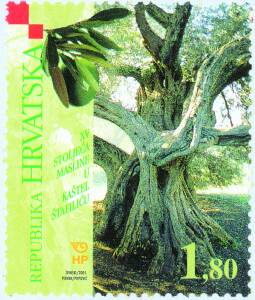
To learn more about destinations in Croatia, check out the TCN series, 25 Things to Know.

